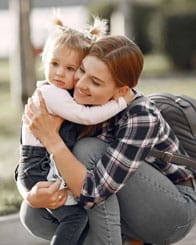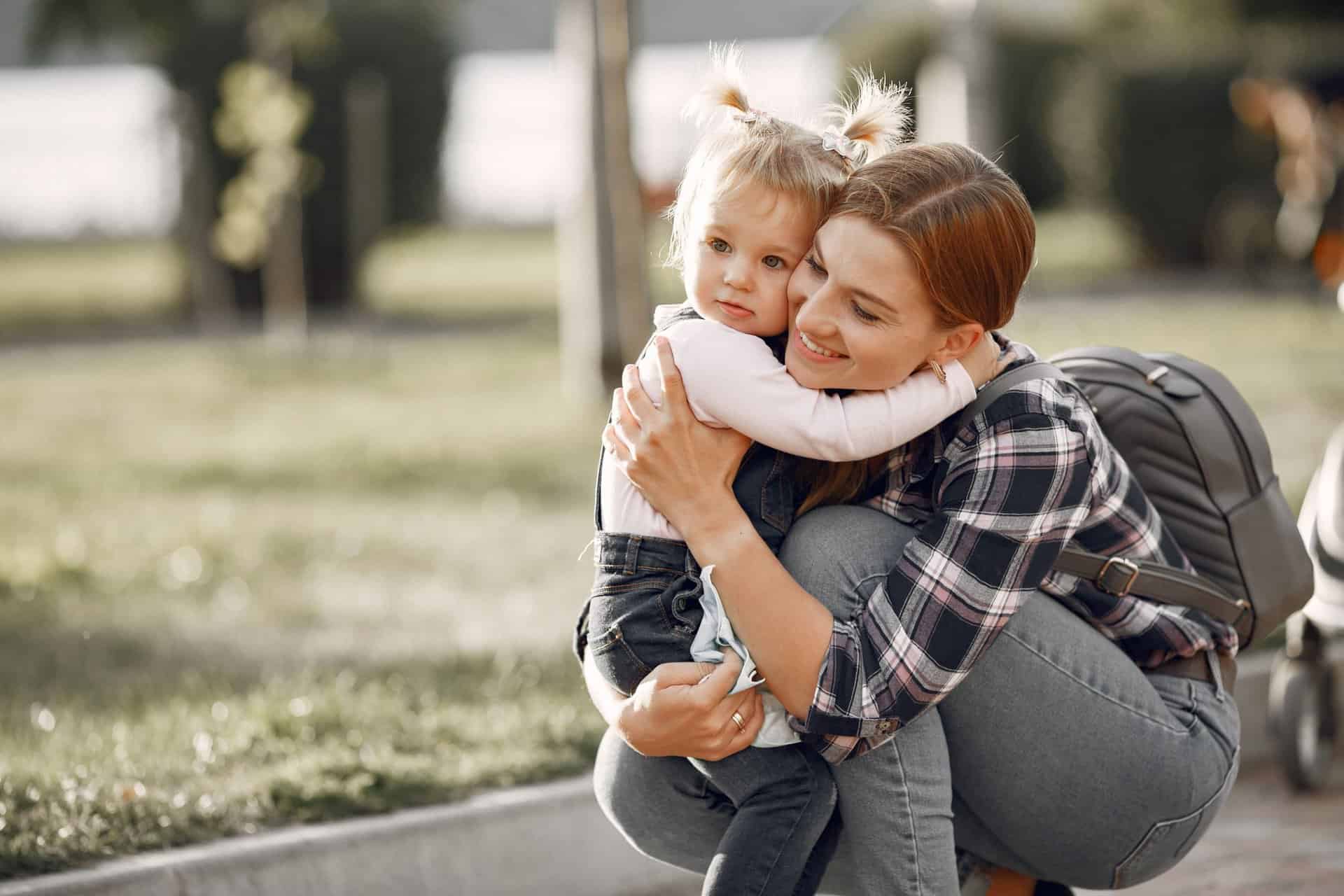
17 Jun Tips on how to deal with separation anxiety in children

At Mainadevi Bajaj International Playschool (MBIP), we are sensitive to the fact that separation anxiety in babies and toddlers is common and a normal stage in childhood development. It is observed that children between the ages of 6 months and 3 years have separation anxiety and fear of strangers. They may cry and become clingy when parents drop them off to school or day care, sometimes only for a few moments.
Some infants do not experience separation anxiety until they are slightly older, while some do not experience it at all. However, babies and toddlers grow out of separation anxiety as they get older.
While your baby’s cries might tempt you to cancel your plans, giving in will only make matters worse the next time you need to leave. Besides, babies really do tend to calm down very quickly after you’ve left. The best way to approach separation anxiety is to address the anxiety and fear the child feels. This can help them feel more comfortable with separation over time.
In order to deal with this rather traumatising condition, at MBIP, we have a system whereby the children are eased into the school routine rather smoothly. A schedule is prepared especially for settling in, keeping in mind this aspect of development and the challenges that emerge therein.
Here’s what you can do to comfort your little one.
Tips on how to handle separation anxiety
Cuddle and comfort the child regularly
Foster secure attachment by spending time holding and cuddling your child each day and comfort them when they are afraid or upset.
Practice brief separations
Practice leaving the baby in a safe place before going into another room. Return after a brief separation. This teaches the baby that you can go away, but will still come back. To make separation less of a shock, play peekaboo with your baby to reinforce the notion that you’ll always return. Similarly, try covering and uncovering toys with a blanket. Toddlers may get similar benefits from playing hide-and-seek. Try leaving them for a few short periods of time, maybe half an hour to an hour, with someone they know and trust.
Once they see that you always return, consider trying it out for longer periods of time.
Foster independence
Give babies and toddlers the opportunity to crawl away from you into another safe room, while maintaining supervision from nearby. This will help them develop independence on their terms, and help them understand that it is safe to do so.
Develop a routine
A regular routine provides a reliable and stable pattern to the day. Routine is important for children, as it provides consistency and reduces the stress of the unknown.
Explain what is happening and return on time
When leaving your child with someone else, explain that you are going away for a little while and that you will come back. As the baby gets older, they will begin to understand these explanations. It is important to return on time, as returning later can cause a child not to trust what you say.
It can also be helpful to provide a timeframe. When doing this, be specific so that the child knows exactly when to expect a return. For example you could say, “I will be back after your snack time to take you home.”
Never sneak away
A big mistake many parents make is trying to leave when your child is not looking or sneaking away when the child is engaged in an activity without saying goodbye. While it may be tempting to sneak away, it can cause problems long term. The infant may develop a constant worry that you could disappear at any time, which worsens separation anxiety.
Create a goodbye ritual
Routine is especially important for younger babies. Try creating a goodbye ritual that will soothe both of you and prepare your baby for the separation. A few things to try can include:
Sing a little song together.
Give your child a hug and kiss or a little wave.
Create a simple but fun handshake.
Recite a little goodbye rhyme together.
Find whatever works for you and stick to it; even if they cry.
Keep goodbyes brief
It’s normal and healthy for your baby to cry when you leave, so don’t discourage it. It is ok to comfort a child who is experiencing separation anxiety, but do not linger. Keep goodbyes brief and upbeat. Drawn-out goodbyes can prolong distress, so keep goodbyes brief and positive. Give them full attention and affection and then leave.
Aim to remain calm
Do your best to keep your emotions in check. As hard as it may be, hold the tears, at least until you are out of sight. If your child sees you upset, that may only heighten their own anxiety and distress. If you’re calm, they will feel more secure and will eventually learn to model that feeling as well.
Stock up on “goodbye gear”
Consider offering your child a comfort item like a stuffed animal or blanket that can comfort them when you leave.
Separation anxiety can be distressing for parents and infants, but connection, communication, and play all help foster a sense of security. Being consistent and sticking to routines can help children understand that when you leave, you will come back.
If separation anxiety seems severe or prolonged, you should discuss your concerns with a doctor, or a paediatrician.



No Comments